Adze Made From Axe Head, With Handle Item Number: E7418-0 from the National Museum of Natural History

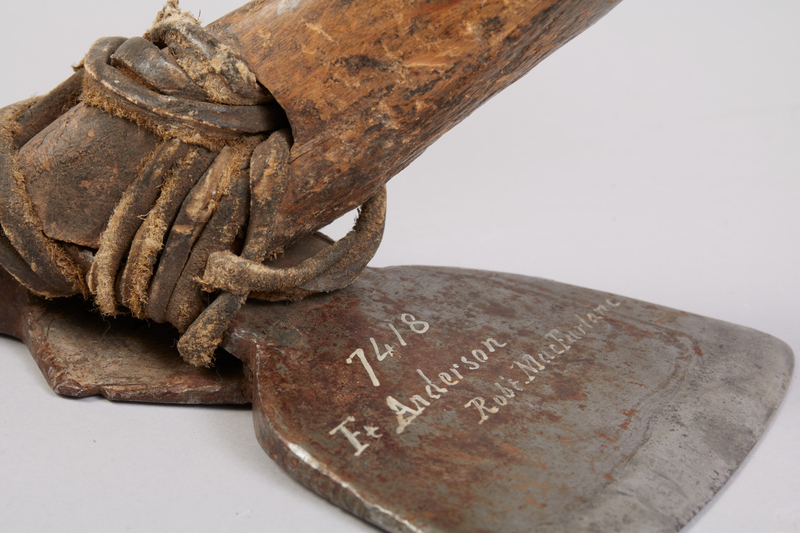
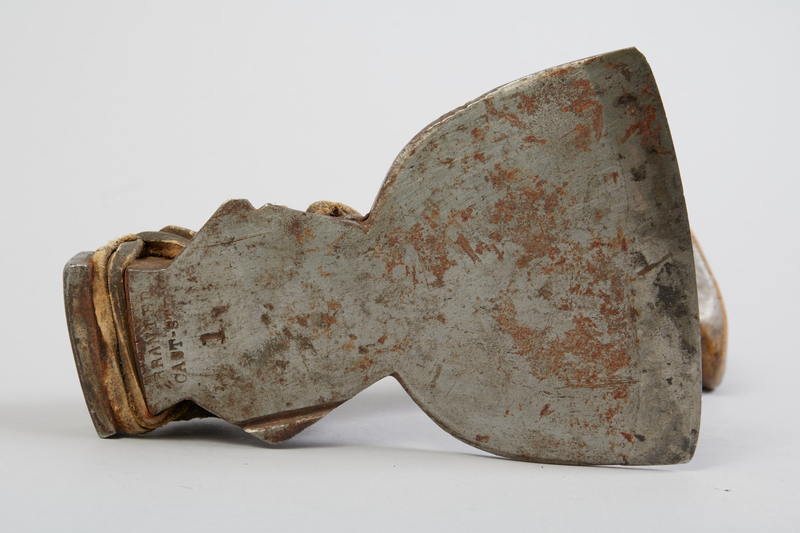
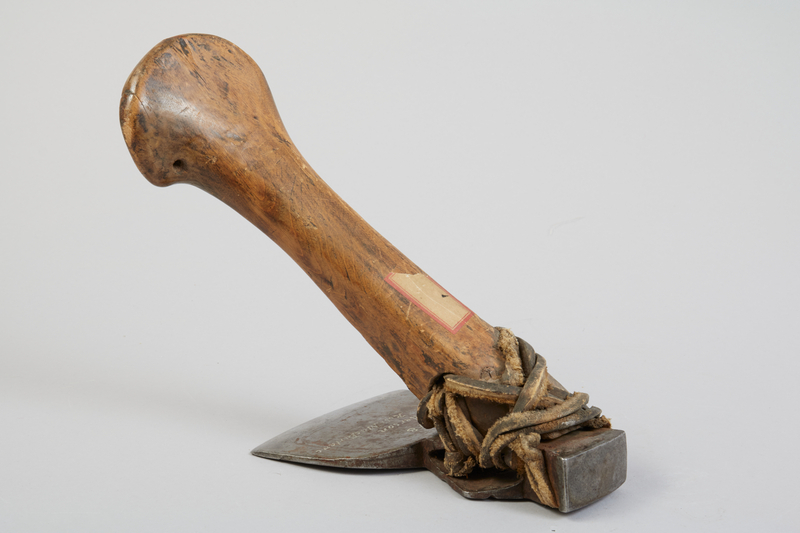
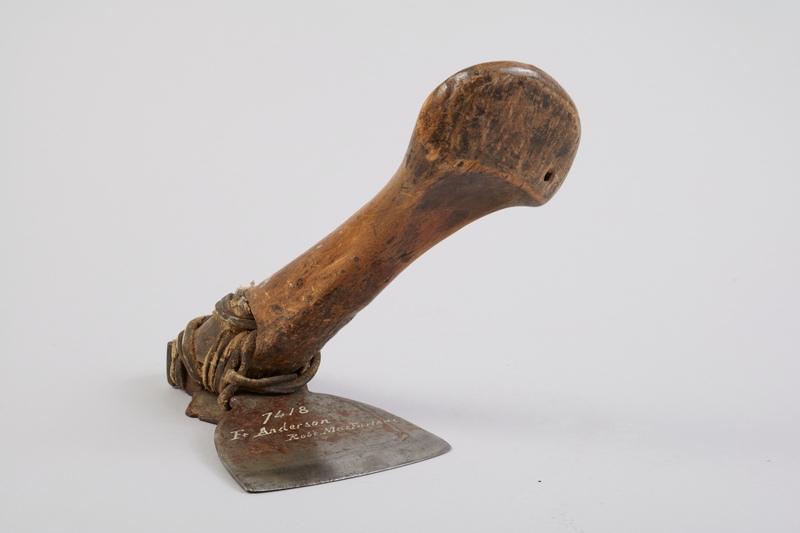
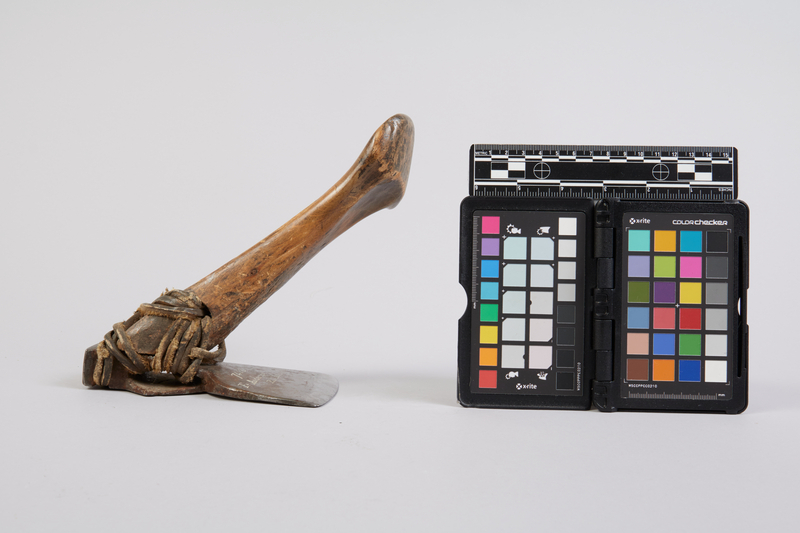
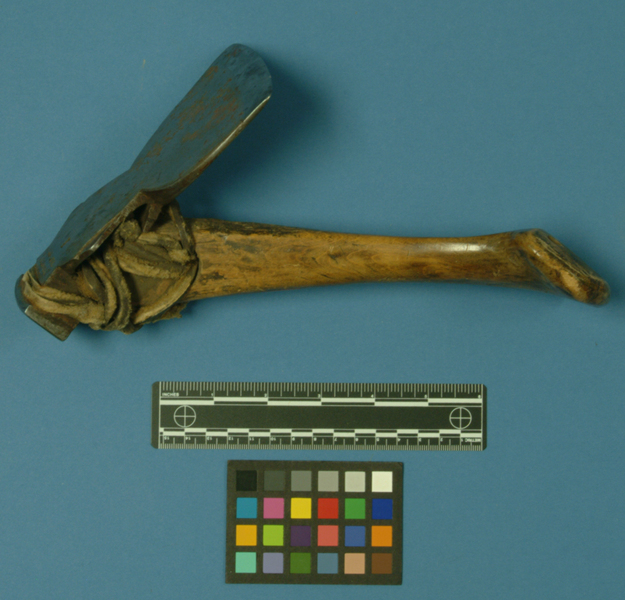
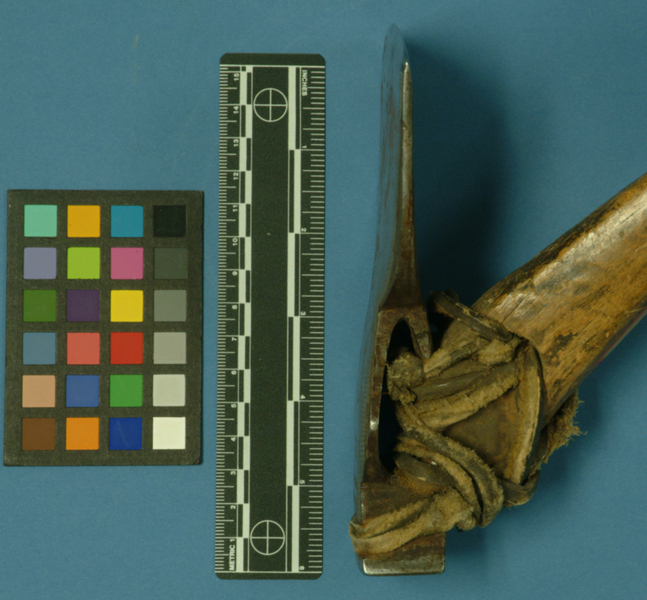


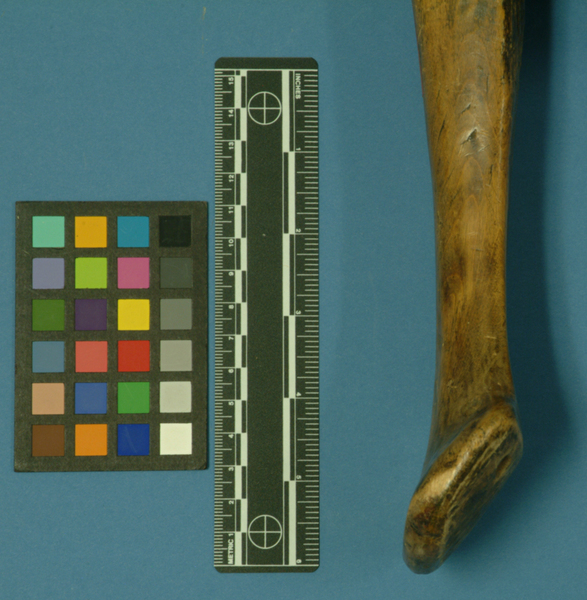

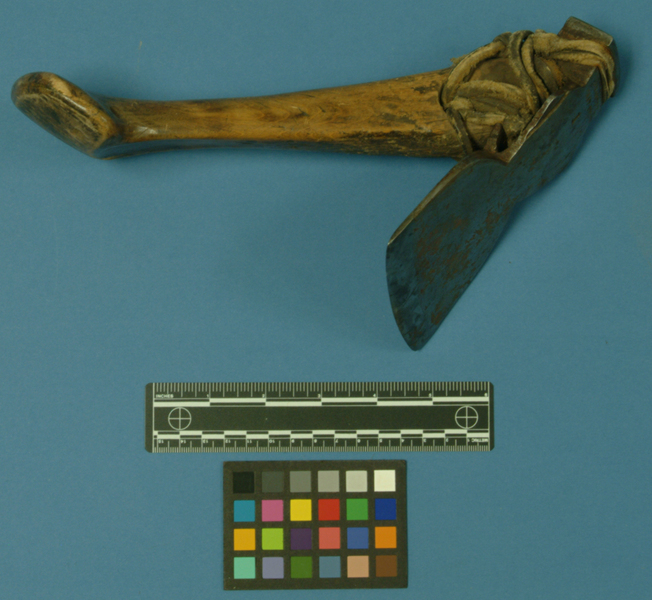
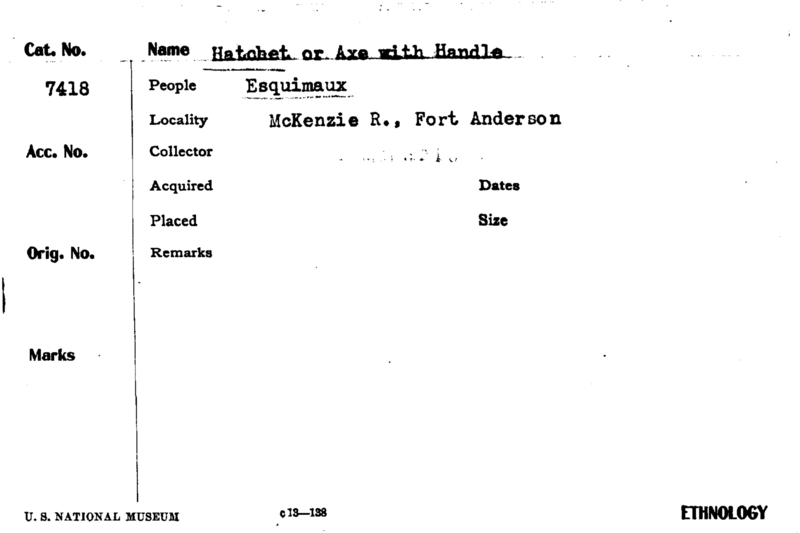
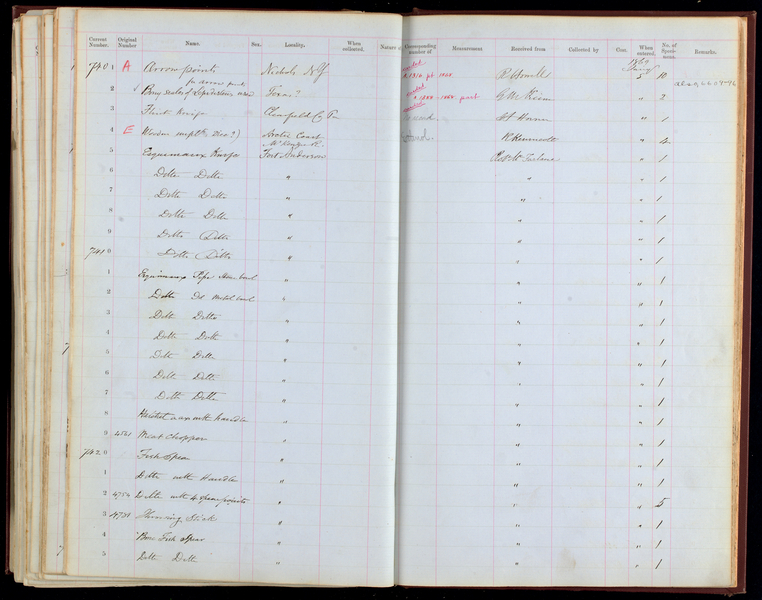
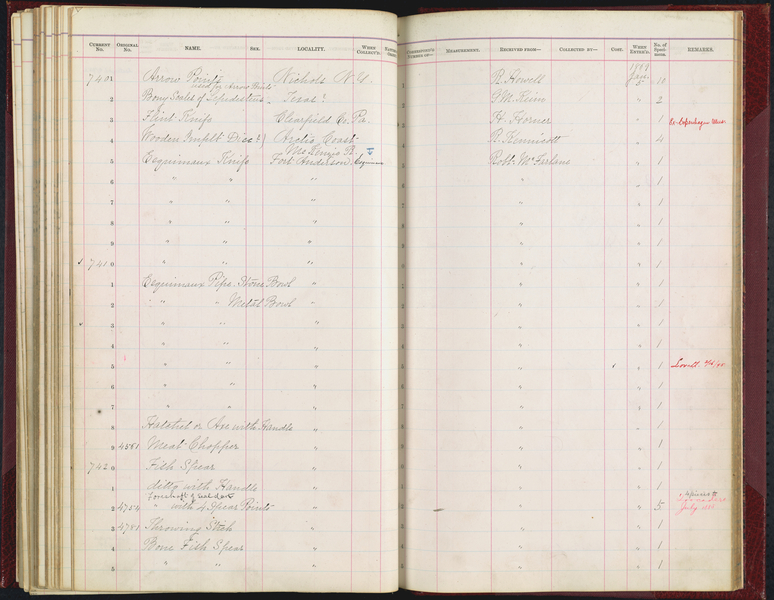
Notes
Source of the information below: Inuvialuit Pitqusiit Inuuniarutait: Inuvialuit Living History, The MacFarlane Collection website, by the Inuvialuit Cultural Resource Centre (ICRC), Inuvik, N.W.T., Canada (website credits here http://www.inuvialuitlivinghistory.ca/posts/12 ), entry on this artifact http://www.inuvialuitlivinghistory.ca/items/102 , retrieved 1-27-2020: An adze with an iron blade attached to a wood handle with a thong made from hide. The blade is an axe head of European origin that has been has reshaped by cutting deep indentations along both sides, and a groove has been cut into the upper surface and adjacent edges to hold the thong that secures the head to the handle . A manufacturer's mark stamped into the original axe head is partially obscured by the groove cut into the upper surface. The handle has been skillfully shaped to provide a secure grip and balance. The end of the handle where it is attached to the blade has been cut aslant and has an elongated hole through which the hide thong repeatedly passes. The thong lies in the groove on the head, protecting it while the adze was in use. More information here: http://www.inuvialuitlivinghistory.ca/item_types/3: The short-handled adze was used for shaping large pieces of wood. The blades of traditional Inuvialuit adzes were made made from stone. When metal axe and hatchet blades became available through trade Inuvialuit used them to make adzes by hafting the blades sideways onto wood handles. The blade was bound to the handle using a thick hide thong that was put on when wet, and which shrank and became hard and tight when dry. Community Interpretations Darrel Nasogaluak: You can tell if an adze was used by a right-handed or a left-handed person. If you place an adze on its head, with the sharp edge pointed toward you, the handle tilts to the right if it was made for a right-handed person and to the left if it was used by a lefty. The more a head was offset, the bigger the person who used it.
Item History
- Made in Northwest Territories, Canada
- Collected in Northwest Territories, Canada
- Received from Roderick R. MacFarlane on January 7, 1869
What
- Name
- Adze Made From Axe Head, With Handle
- Identification Number
- E7418-0
- Type of Item
- adze
Who
- Culture
- Eskimo, Inuit and Inuvialuk
- Received from
- Roderick R. MacFarlane
Where
- Holding Institution
- National Museum of Natural History
- Made in
- Northwest Territories, Canada
- Collected in
- Northwest Territories, Canada
When
- Acquisition Date
- on January 7, 1869
Other
- Accession Number
- 69A00012